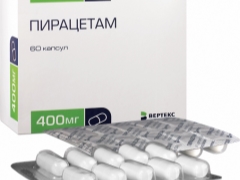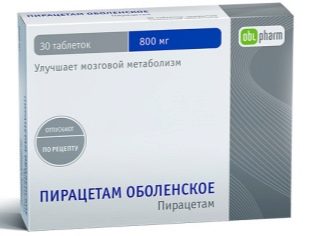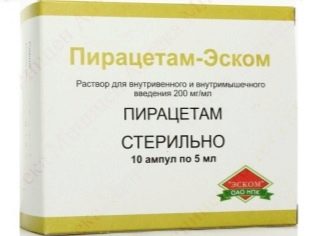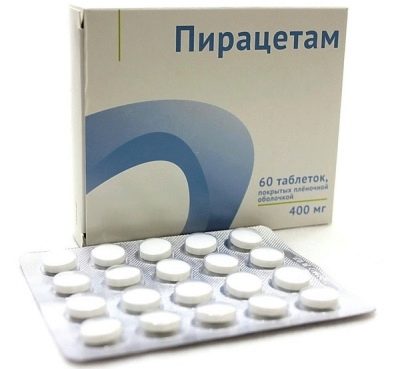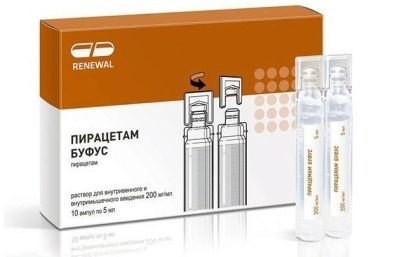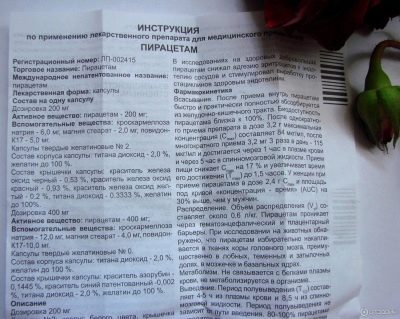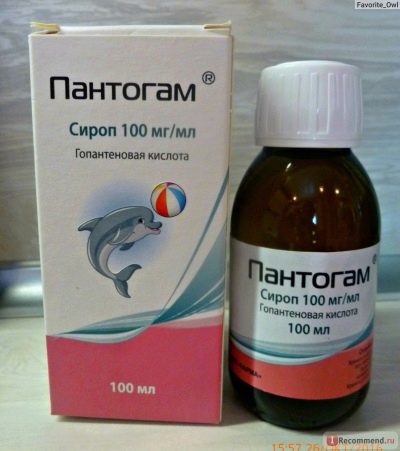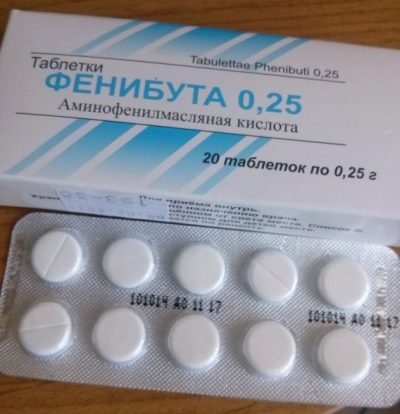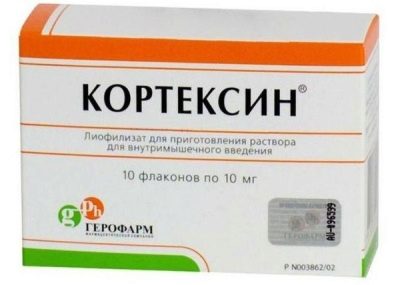Piracetam children: dosage and instructions for use
Nootropic drugs are widely prescribed for various diseases of the nervous system and are recommended to protect the brain from harmful effects. One of the most popular medicines of this group is Piracetam. It is often used in adults with parkinsonism, asthenia, or cerebral arteriosclerosis. Is it shown to children, in what cases is the child discharged and how does it affect the nervous system of babies?
Release form and composition
Piracetam is produced by many pharmaceutical companies both in our country and abroad. Next to its name there is sometimes a second word indicating the manufacturer, for example, Piracetam-Richter, Piracetam Obolensky, Piracetam-Ferein or Piracetam-Eskom.
However, all these drugs include the same active ingredient, which is also called piracetam.
The drug is available in the following forms:
- Coated tablets. They have a convex capsule-shaped or round shape, and the color is white or yellow. One tablet may contain 200, 400, 800, or 1200 mg of piracetam, as well as density auxiliary substances, such as povidone, hypromellose, and starch. 10, 20 or more tablets are sold in one box (in blisters or in a jar).
- Capsules. They are characterized by white or red-black color and oblong shape. Like tablets, this variant of the medicine is sold in blisters or in jars of 10, 20, 30 or more pieces in one pack. One capsule contains 200 or 400 mg of piracetam, supplemented with sodium lauryl sulfate, gelatin, potato starch and other substances.
- Solution for pricks. Such Piracetam is sold in boxes of 5 or 10 ampoules containing 5 or 10 ml of clear liquid. The solution inside the ampoule is usually colorless, but may be yellowish. The content of piracetam in 1 ml is 200 mg (in a 5 ml ampoule contains 1 g). It is supplemented with sterile water and other chemical compounds, for example, potassium phosphate or sodium acetate.
Operating principle
Piracetam is able to influence the work of the central nervous system, since such a substance stimulates the production of certain compounds important for the functioning of the brain, as well as accelerates metabolic processes in nerve cells.
The use of such a drug not only has a positive effect on the functions of the nervous system, but also helps protect the brain from harmful factorsfor example, toxic substances in the blood or lack of oxygen.
Indications
Among the reasons for prescribing Piracetam to children are various neurological pathologies, including encephalopathy, cerebral palsy, intracranial injuries, neuroinfections, and other diseases. The medication is also prescribed for preventive purposes, for example, for schoolchildren before exams, when their brains are exposed to higher loads.
From what age is prescribed?
Piracetam can be used in the treatment of a child of any age, but this medicine is given to babies of the first years of life only for good reasons, for example, if the newborn suffered a head injury during childbirth.
Piracetam capsules are usually prescribed from 5 years.
Contraindications
The drug is not prescribed to children with allergies to its components, kidney disease, diabetes and some other severe pathologies. If the child has some kind of disease, the question of using Piracetam is decided individually.
Side effects
In some children taking Piracetam, the gastrointestinal tract is disturbed, nervousness, hand tremors, anxiety, restlessness and other negative symptoms appear. If they arise, you should immediately tell your doctor.
Instructions for use
Most often, the drug is prescribed in solid form, and injections (intravenous or intramuscular) are used in rare cases. The dosage of Piracetam is selected for each patient separately, because it affects the child's age and his diagnosis. That is why giving tablets or capsules to children. without consulting a doctor should not. The course of treatment is usually long and ranges from several weeks to 2-6 months.
Overdose and drug interactions
If you exceed the dose of Piracetam, it will increase its side effects. The drug can be combined with many other medications, but the effectiveness of some of them under its effect increases, so when taking any other means you need to consult a doctor.
Terms of sale and storage
To purchase Piracetam, you need a prescription that a pediatrician, neurologist, or other specialist writes. The price of the medicine depends on its packaging and on the manufacturer, but usually it is low.
Store the drug at home is advised at room temperature out of the reach of small children place. Depending on the manufacturer and the form, Piracetam has a shelf life of 2 or 3 years in most cases. It is important to clarify it before using the medication to prevent the use of expired funds.
Reviews
On the use of Piracetam in the treatment of children there are many good reviews. According to parents, the medicine has a positive effect on the child’s condition, improves brain function, and reduces neurological symptoms. The advantages of the drug also include its availability and low cost.
As mothers say, in most cases medication is transferred normally. Only rarely does the child’s body respond to pills or capsules with negative side effects, such as nausea, changes in stool, nervousness, or absent-mindedness. They are noted in negative reviews about the drug.
Also sometimes there are complaints about the lack of therapeutic effect.
Analogs
Instead of Piracetam, another drug can be used that contains the same active ingredient, for example, Nootropil, Lucetam or memotropil. Such drugs are presented in several forms, so choosing the right substitute is quite simple.
In addition, the doctor may prescribe combination medicines containing piracetam. One such drug is Fezam, which contains a combination of piracetam and cinnarizine.
Others may be substituted for Piracetam. nootropicsamong which in the treatment of children are especially popular:
- Pantogam. This medicine based on hopantenic acid is used for tics, epilepsy, mental retardation, brain concussion and other neurological problems. In the form of a syrup, it is used even in infants, and tablets are given to children over three years old. His counterparts are Pantokalcin and Gopantam.
- Phenibut. Such a drug is in demand for neurosis, insomnia, phobias, stuttering and other pathologies of the central nervous system. It is manufactured in tablets and discharged to children of any age, if there are indications for such an appointment.
- Cortexin. This medicine in ampoules has a beneficial effect on the functioning of the brain, so it helps with various neurological diseases. Such intramuscular injections are used at any age and are prescribed even to premature babies.
- Glycine. Such a drug is able to adjust sleep patterns, improve brain function and protect the child’s nervous system from heavy loads. It is produced in the form of tablets that dissolve in the mouth and, when indicated, are given to children from birth.
- Kogitum. This medicine in the form of a sweet solution is used from the age of 7 (according to indications sometimes even earlier) in children with neurosis, brain damage, developmental delay and other problems. Its action provides acetylamino-succinic acid.
